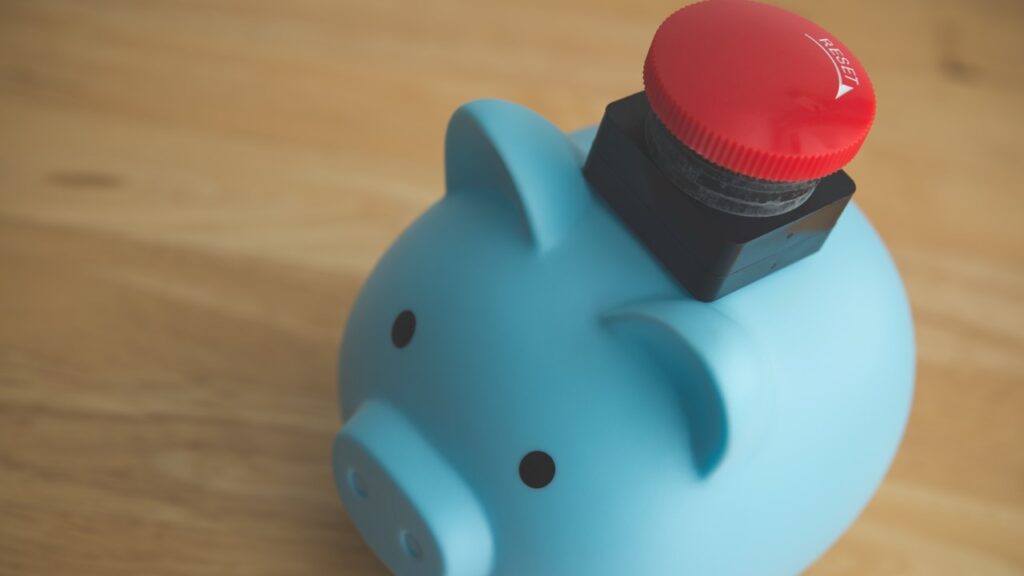Secure your future by preparing for life’s financial surprises today.
If you want to feel more financially stable, one of the best things you can do is build your emergency fund. It’s your buffer for life’s unpredictable moments.
From job loss to urgent car repairs, an emergency fund lets you respond without panic or debt. It’s not a luxury — it’s a foundation of responsible money management.

Cut Grocery Costs With These Tips
Discover simple and effective ways to shop smarter, waste less, and make your food budget last longer each month.
Many UK households skip this step, thinking it’s out of reach. But even saving small amounts consistently can make a big difference in a short time.
Let’s go through a realistic, step-by-step process to help you build your emergency fund, no matter your current income level or expenses.
Step-by-Step: Build Your Emergency Fund
Building an emergency fund isn’t about saving thousands overnight. It’s about following consistent, smart steps that get you from zero to prepared — one habit at a time.
These 8 steps are designed for real life. Whether you’re starting from scratch or rebuilding, they’ll help you create a safety net that actually works.
1. Calculate Your Essential Expenses
Start by adding up your fixed monthly costs: rent, bills, transport, food and insurance. This number will guide how much you’ll eventually need in your emergency fund.
Don’t include extras like restaurants or holidays. The fund is designed to cover only essential survival costs if your income stops or something urgent happens suddenly.
2. Set a Small Initial Target
Instead of aiming for six months right away, begin with £500 or £1,000. It’s realistic, achievable, and still strong enough to cover many common emergencies in the UK.
This first goal helps you build your emergency fund without feeling overwhelmed. Hitting that milestone builds momentum and confidence to keep going toward larger targets.
3. Open a Separate Savings Account
Keep your emergency fund out of sight. Open a dedicated savings account — preferably with easy access — to avoid mixing it with your spending money.
This visual separation makes a difference. When you see your balance growing in its own place, you’re more likely to protect it and let it grow uninterrupted.
4. Automate Monthly Transfers
Set up a standing order or recurring transfer. Even small amounts add up. £25 per week becomes £1,300 per year — and it’s barely noticeable if automated.
Consistency is more important than size. Automation ensures you’re paying yourself first, without relying on motivation or memory to move money every payday.
5. Track Unexpected Income
Bonuses, cashback, refunds, birthday money — treat these as fund boosters. They’re perfect to save since they’re not part of your monthly budget and won’t be missed.
This trick builds your balance faster and teaches you to view extra money differently. Over time, it strengthens your savings muscle and reduces impulse spending.
6. Increase Contributions Gradually
Once your budget allows, bump up your monthly savings. If you finish paying off a debt, redirect that amount to continue growing your emergency reserves.
This progression is how you build your emergency fund to cover three to six months of living expenses. Make it part of your long-term routine as income improves.
7. Define the Rules of Use
Decide what counts as an emergency before it happens. Job loss, medical bills or essential repairs qualify — but holidays, sales or subscriptions definitely don’t.
Clear boundaries prevent misuse. It also helps reduce guilt or indecision when something happens. The fund is there to solve real problems, not short-term cravings.
8. Refill After Every Use
If you need to dip into the fund — that’s okay. But always make a plan to restore it. Start again from your mini-goal and rebuild steadily.
Making this part of your mindset helps you build your emergency fund as a permanent financial layer, not a one-time achievement. Protection means restoring what you’ve already used.
Why Emergency Funds Are Essential
It’s easy to underestimate the importance of emergency savings — until you suddenly need them. That’s when having a reserve turns financial stress into confident problem-solving.
Emergency funds aren’t just for job loss. They protect you from debt, panic and instability during life’s most inconvenient moments.
Avoid High-Interest Debt
Without savings, your only fallback is often credit cards or payday loans — which create more financial pain over time.
With emergency savings, you avoid those traps and stay in control, handling issues on your own terms and timeline.
Reduce Stress and Uncertainty
Money stress affects your health and decision-making. Knowing you’ve got a few months of expenses set aside brings real emotional and mental relief.
You make better choices under pressure when you’re not panicking — another key reason to build your emergency fund as soon as possible.
Handle Life’s Curveballs
From boiler breakdowns to sudden travel or pet emergencies, unexpected costs always pop up. Having cash on hand makes them manageable, not catastrophic.
These moments test your financial resilience. Being ready means fewer setbacks, fewer regrets, and more peace of mind in daily life.
Where to Store Your Emergency Fund Safely
Choosing the right home for your emergency savings is crucial. You want quick access, basic growth and enough separation from your everyday spending money.
Let’s explore a few solid storage options that work well for UK residents.
High-Interest Easy Access Accounts
These accounts give you instant access while still earning interest. Many UK banks now offer over 4% AER — a great place to keep short-term savings.
Search comparison sites for current rates and make sure there are no withdrawal restrictions. It’s a smart way to protect and grow your emergency fund.
Avoid Mixing with Current Account
Keeping your fund in your main account increases the risk of accidental spending. You may not even realise you’re dipping into your safety net.
To successfully build your emergency fund, it’s important to separate it from everyday money. A dedicated account keeps your buffer clearly defined and protected from daily temptations.
Consider a Savings Pot with Your Bank
Banks like Monzo and Starling offer savings “pots” within the same account. These are helpful if you prefer everything in one place, but still want boundaries.
Use labels like “Emergency Only” and turn off round-up transfers to keep the pot pure. Visibility and intention are everything when managing emergency savings.
Tips to Build It Faster Without Stress
Saving money doesn’t have to feel like punishment. With a few strategic habits, you can increase your savings rate and reach your goals without major lifestyle compromises.
These tips are simple, low-pressure, and ideal for people who want to keep progressing even on a tight or fluctuating budget.
Automate Your Contributions
Setting up automatic transfers helps you prioritise your fund before spending begins. Even £10 per week can add up significantly if you never need to think about it.
By automating the process, you ensure consistency — and that’s more powerful than size. It’s one of the easiest ways to build your emergency fund without added stress.
Save Irregular Income or Bonuses
Windfalls like cashback, tax refunds or birthday money are ideal for boosting your savings without touching your regular budget. These “extra” funds can move you forward quickly.
Because they’re unexpected, you won’t miss them. Reframing unexpected income as an opportunity to grow your emergency fund makes every bonus more meaningful and productive.
Use Round-Up Tools in Banking Apps
Digital banks like Monzo or Starling let you round up purchases and save the difference. These small transfers add up over time without impacting your daily budget.
You’re saving passively with every transaction. It’s another way to build your emergency fund effortlessly, using tools that work in the background to grow your buffer.
Cut One Expense Temporarily
Choose a single non-essential cost to pause for 30 days — like takeaways or streaming — and redirect that amount to your emergency fund during that time.
It’s not about restriction forever. This simple, short-term shift gives you a quick savings boost while showing how little sacrifices can add up when used intentionally and consistently.
Sell Unused Items at Home
Declutter and turn forgotten items into savings. Platforms like Vinted, eBay or Facebook Marketplace help convert clothes, gadgets or furniture into quick cash with minimal effort.
Use the profits to build your emergency fund faster without touching your salary. You’ll clear space and gain momentum at the same time — a double benefit for your goals.
Also Read: Stay Consistent with Monthly Budgets
Now that you’ve learned how to build your emergency fund, the next step is budgeting. A strong monthly plan helps you protect your savings and avoid unnecessary withdrawals.
By assigning every pound a role, your budget prevents chaos. It’s your roadmap to keep spending intentional and savings intact through every stage of life.
When you stick to a budget, you reduce reliance on your emergency fund and make smarter decisions. One good habit supports the other — and both build lasting security.
Check out our article How to Budget Monthly in the UK to complement your savings plan and gain full control of your financial future.

How to Budget Monthly in the UK
Discover practical and effective ways to organise your income, control your expenses and feel more confident about your finances in the UK.

